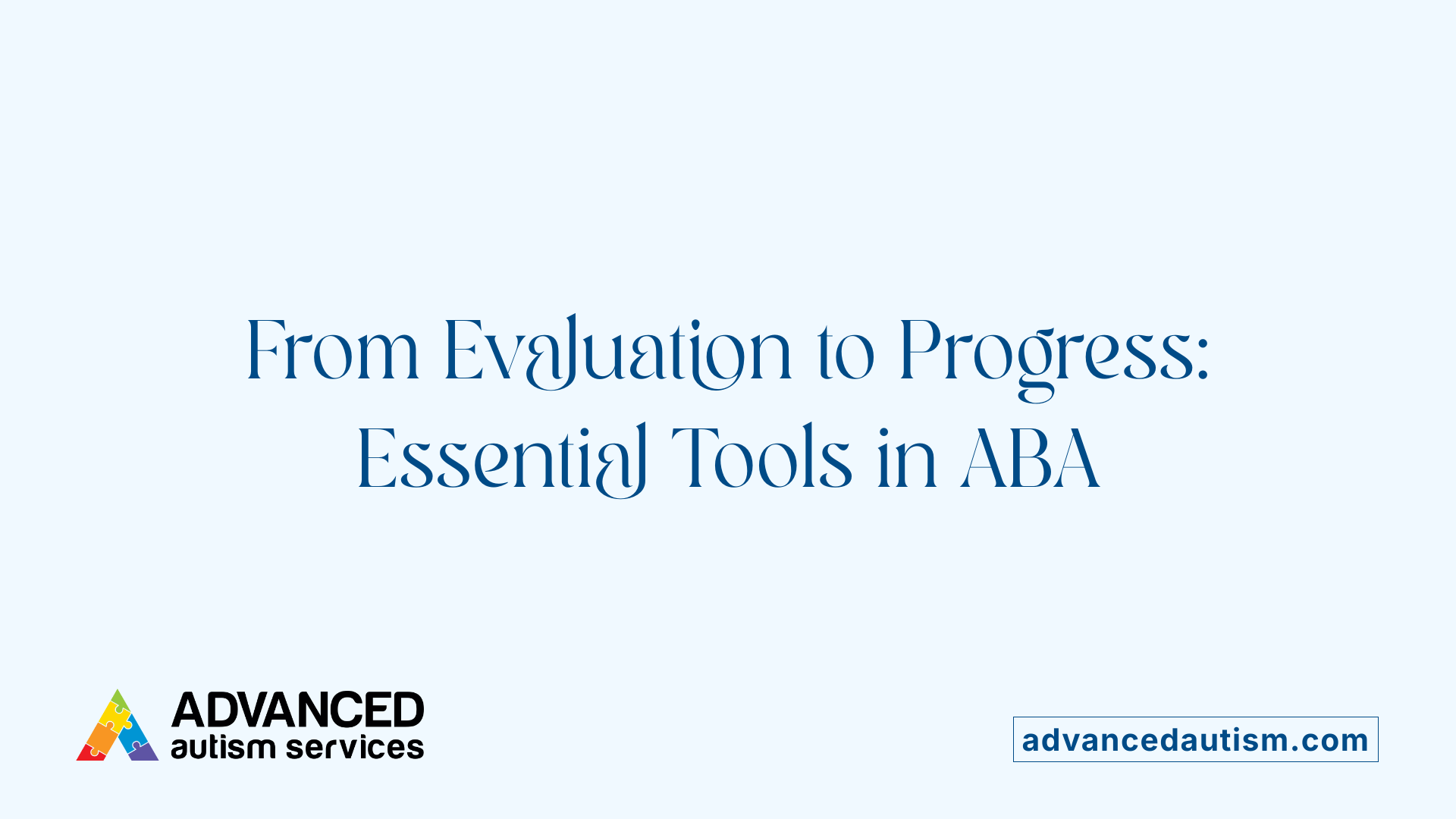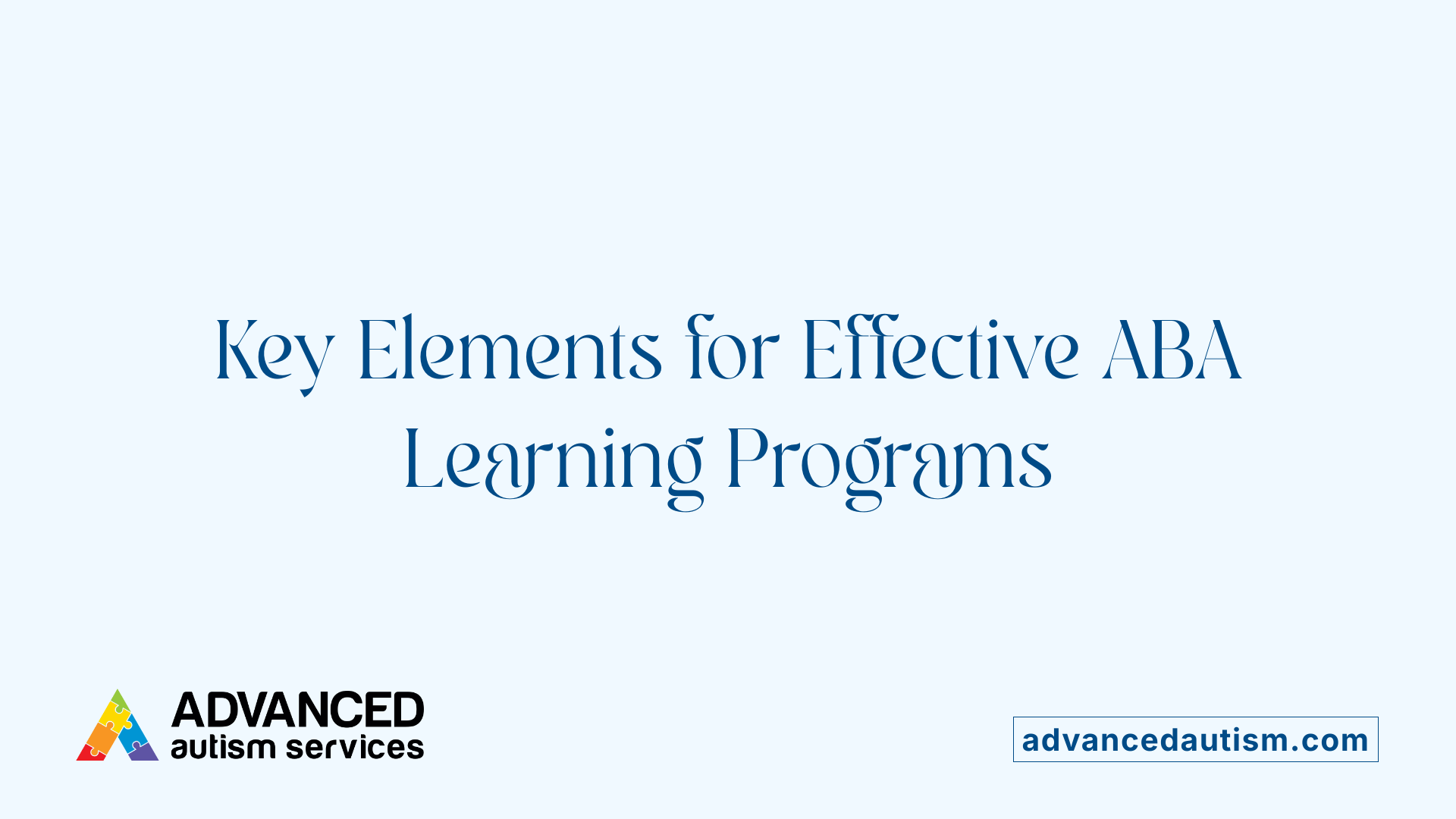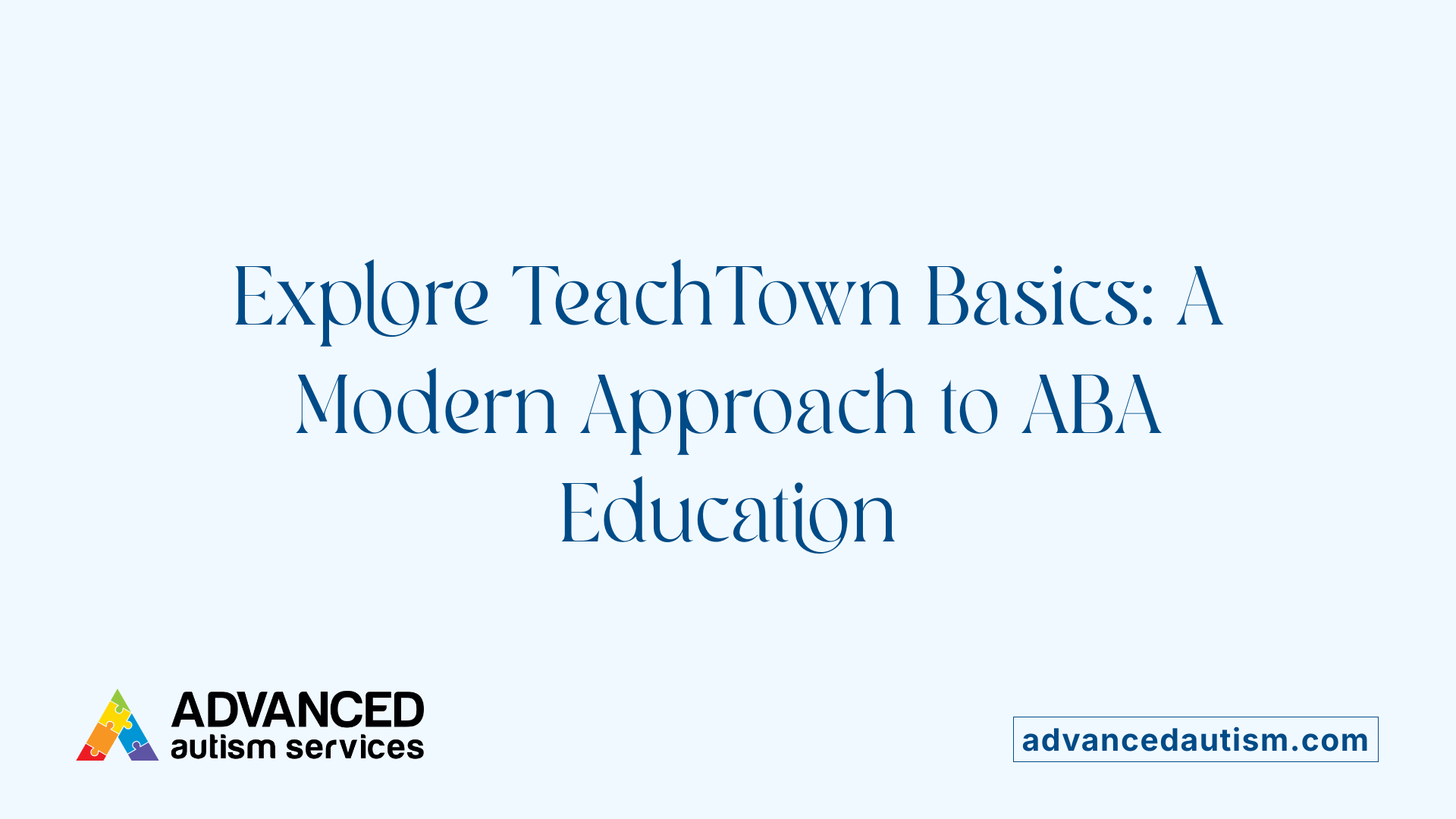ABA Therapy Curriculum
Comprehensive Insights into ABA Therapy Programs and Assessments
Understanding the Foundations and Applications of ABA Curricula
Applied Behavior Analysis (ABA) therapy curricula form the backbone of effective intervention strategies for children and young adults with autism spectrum disorder (ASD) and other developmental disabilities. This article explores the essential components, assessment tools, methodologies, target populations, and training frameworks that underpin these curricula, highlighting innovative programs like TeachTown Basics and their role in fostering skill acquisition and behavioral improvements.
Assessment Tools Fueling Personalized ABA Interventions
 In the realm of Applied Behavior Analysis (ABA) therapy, assessment tools play a crucial role in tailoring interventions to each child's unique needs. Commonly used assessments such as VB-MAPP (Verbal Behavior Milestones Assessment and Placement Program), ABLLS-R (Assessment of Basic Language and Learning Skills - Revised), and AFLS (Assessment of Functional Living Skills) serve as foundational platforms for evaluating a child's current skill levels.
In the realm of Applied Behavior Analysis (ABA) therapy, assessment tools play a crucial role in tailoring interventions to each child's unique needs. Commonly used assessments such as VB-MAPP (Verbal Behavior Milestones Assessment and Placement Program), ABLLS-R (Assessment of Basic Language and Learning Skills - Revised), and AFLS (Assessment of Functional Living Skills) serve as foundational platforms for evaluating a child's current skill levels.
These tools help practitioners identify strengths and areas for growth across various developmental domains. For instance, VB-MAPP assesses language, social, and academic skills for children aged 2-6, providing a detailed developmental profile. ABLLS-R guides language and learning skills based on Skinner's Verbal Behavior, enabling precise goal setting. AFLS focuses on functional living skills, supporting independence across daily activities.
Assessment results establish baseline data, informing the development of individualized goals and intervention plans. Documentation from these assessments ensures that therapy is responsive and adaptable over time.
Ongoing data collection extends beyond initial evaluations. Methods such as direct observation, systematic recording of behaviors, and feedback from caregivers and teachers help monitor progress. These approaches allow for real-time adjustments, ensuring that interventions remain effective and aligned with the child's evolving needs.
In sum, assessment tools like VB-MAPP, ABLLS-R, and AFLS, combined with dynamic data collection practices, underpin personalized ABA strategies. They ensure that each child's learning pathway is carefully monitored, flexible, and rooted in comprehensive understanding, ultimately fostering meaningful developmental gains.
Core Components of Effective ABA Curricula

What are the key components of ABA therapy curricula?
An effective ABA therapy curriculum is built on several foundational elements that work together to support meaningful learning outcomes for children with developmental challenges. At its core, the curriculum begins with thorough assessments that help identify a child's strengths, weaknesses, and individual needs.
Based on assessment data, personalized and measurable goals are established. These goals guide targeted interventions across various areas such as communication, social skills, academic abilities, and daily living skills. The curriculum employs a variety of evidence-based teaching strategies, including Discrete Trial Training (DTT), naturalistic and incidental teaching methods. These approaches are chosen for their proven effectiveness in promoting skill acquisition and generalization.
Data collection plays a vital role in ensuring the curriculum’s success. Regular progress monitoring allows professionals and families to track improvements objectively, make informed decisions, and refine strategies or modify goals as needed. This ongoing evaluation helps maintain a customized learning plan aligned with each child's evolving needs.
Family involvement is another crucial aspect. Providing parent and caregiver training on intervention techniques and fostering consistent communication help ensure that skills learned in therapy are reinforced across different settings. This consistency supports skill generalization, making learning more practical and sustainable.
The curriculum also emphasizes teaching core skills such as communication, social interaction, academic learning, and independence. Visual supports, role-playing, sensory activities, and musical interventions are commonly used tools to engage children and facilitate different types of learning.
In summary, a comprehensive ABA curriculum encompasses assessment, individualized goal-setting, evidence-based teaching strategies, diligent progress tracking, and active family participation—all directed toward enabling children to reach their full potential in everyday life.
Resources and Materials for Understanding ABA Curriculum Benefits
Understanding the scope and advantages of ABA (Applied Behavior Analysis) therapy curricula involves exploring a variety of comprehensive resources. These include professional guidelines, curriculum manuals, assessment tools, training programs, and scientific research that demonstrate ABA's effectiveness.
Assessment tools such as ABLLS-R, AFLS, PEAK, Skills, and VB-MAPP are essential for evaluating and tracking individual progress. ABLLS-R helps assess basic language skills, while AFLS focuses on functional living skills. PEAK expands language and cognition, Skills provides research-supported assessment and curriculum options, and VB-MAPP is tailored for language developmental milestones.
Alongside these tools, training programs designed for caregivers, behavior analysts, and educators are vital. They offer in-depth instruction on implementing ABA techniques, understanding behavioral principles, and tailoring interventions to each individual's needs.
Scientific literature consistently supports ABA's effectiveness, emphasizing its role in improving communication, social skills, and adaptive behaviors in children with autism and developmental disabilities. Organized by reputable organizations like the New England Center for Children and other accredited institutions, these resources reinforce ABA's evidence-based foundation.
Supervision by qualified professionals, such as Board Certified Behavior Analysts (BCBAs), and the involvement of Registered Behavior Technicians (RBTs) ensure proper application of curricula and assessment methods. They also facilitate ongoing monitoring and goal adjustment, maximizing the benefits for each learner.
In summary, a combination of standardized assessment tools, educational manuals, professional training, and scientific research forms a robust foundation for understanding and leveraging ABA curricula effectively. These resources support educators and families in adopting evidence-based practices that foster meaningful development and skill acquisition for individuals with autism and related disabilities.
Target Populations and Age Groups within ABA Programs
Which age groups and populations are targeted by ABA therapy curricula?
ABA therapy curricula are primarily designed to support children diagnosed with autism spectrum disorder (ASD) along with other neurodevelopmental or behavioral challenges such as intellectual disabilities and developmental delays. These programs are versatile and aim to develop essential skills, including language, social interactions, daily living, and vocational skills.
Most curricula specify a target age range, often from as young as 2 years old to young adulthood, typically covering ages 2-22. For example, programs like the ACE (Autism Curriculum Encyclopedia) provide resources for children aged 3 to 22, while others like the VB-MAPP focus on language development in children aged 2-6.
The flexibility of ABA frameworks allows practitioners to adapt interventions for adolescents and adults who have similar developmental or behavioral needs. This means that, although many curricula target early childhood, modifications and extensions enable support for lifelong learning and independence.
Behavior analysts customize interventions based on detailed assessments, individual interests, and developmental levels. They often use tiered support systems, ensuring that each individual receives interventions tailored to their specific strengths and challenges. This personalized approach makes ABA curricula effective across diverse populations with various developmental profiles.
In summary, ABA programs are designed to meet the developmental and behavioral needs of a broad age spectrum, from infants to adults, emphasizing adaptability based on individual assessments, interests, and developmental stages.
Training and Supervision for ABA Practitioners
What training and supervision are provided for ABA technicians and professionals?
Behavior analysts and supporting staff undergo rigorous training and supervision to maintain high standards of practice. This process begins with comprehensive coursework covering fundamental ABA principles, ethical considerations, data collection, and intervention techniques. After coursework, practitioners participate in supervised fieldwork, where they apply their knowledge under the guidance of experienced supervisors.
Supervision is a crucial component, involving regular oversight through direct observation, performance evaluations, and ongoing feedback. Supervisors typically use structured tools like handbooks and evaluation packets to ensure consistent and effective oversight. To be qualified as supervisors, individuals such as BCBAs (Board Certified Behavior Analysts) and certified trainers complete specific supervision training, including programs like the 8-hour Supervisor Training Curriculum.
Supervisory visits often occur at least biweekly, featuring direct client interactions, data review, and discussions about ethical practices. For RBTs (Registered Behavior Technicians), supervision by BCBAs or qualified professionals includes routine performance checks, fidelity assessments, and ensuring adherence to ethical and safety standards. Supervision emphasizes delivering safe, effective interventions, especially when working with clients exhibiting severe behaviors, ensuring practitioners are competent and strategies are implemented with integrity.
This structured approach to training and supervision guarantees that ABA practitioners are well-prepared to support children and individuals with developmental challenges effectively and ethically.
| Aspect | Details | Purpose |
|---|---|---|
| Initial Coursework | Fundamentals of ABA, ethics, data collection | Foundation for effective practice |
| Supervised Fieldwork | Practical application under supervision | Develop real-world skills |
| Supervision Frequency | Biweekly or more | Ensure ongoing competence and fidelity |
| Supervisor Requirements | BACB-certified, completed supervision training | Qualified guidance and oversight |
| RBT Supervision | Regular checks, fidelity assessments, safety emphasis | Maintain high-quality, safe interventions |
This comprehensive supervision framework supports the consistent delivery of high-quality ABA services.
Methodologies and Instructional Strategies in ABA Curricula
ABA (Applied Behavior Analysis) curricula are designed with a range of instructional approaches that cater to the diverse needs of learners with autism and developmental disabilities. These methodologies focus on small, manageable steps that facilitate skill acquisition and promote generalization across various settings.
One of the foundational techniques used within ABA programs is discrete trial training (DTT). This approach involves structured, repeated opportunities for learners to practice skills with reinforcement, making it effective for teaching specific behaviors and skills. Alongside DTT, natural environment teaching (NET) emphasizes teaching skills within everyday activities, making learning more relevant and enhancing generalization. Task analysis is another key methodology, breaking complex skills into smaller, teachable components to gradually build competence.
In addition to these core approaches, curricula such as ABLLS-R, AFLS, PEAK, and VB-MAPP integrate assessment and skill-tracking tools, providing a comprehensive framework for guiding development across communication, social, self-help, and academic domains.
Instructional strategies also play a critical role in effective ABA teaching. Positive reinforcement is a primary method, encouraging desirable behaviors through rewards or praise. Prompting techniques—such as physical, verbal, or visual cues—are used to guide learners toward correct responses, with gradual fading to promote independence. Behavior chaining helps teach multi-step tasks by linking simple behaviors into a sequence, while redirection techniques are employed to prevent or stop maladaptive behaviors and guide learners toward appropriate actions.
Together, these methodologies and strategies form a robust, evidence-based approach that supports individualized learning goals. They are essential for fostering the development of functional, independent skills in students with diverse needs, ultimately aiming for meaningful progress and quality of life improvements.
Features and Applications of Specific ABA Curricula like TeachTown Basics

What features, contents, and purposes does specific ABA curricula like TeachTown Basics have?
TeachTown Basics is an innovative ABA-based curriculum tailored for children and young adults aged 2 to 22 with moderate to severe disabilities. It combines computer-based programs with teacher-led activities to deliver a comprehensive, engaging learning experience. The curriculum covers diverse areas such as language development, cognitive skills, social-emotional understanding, adaptive behavior, and academic knowledge.
One of its distinctive features is the inclusion of over 300 generalization lessons. These lessons are designed to help students transfer skills learned in structured settings to real-world situations, promoting independence and functional use of skills. Each lesson is explicitly written and easy for educators, para-educators, and caregivers to implement, ensuring consistent intervention.
The curriculum emphasizes individualized instruction, allowing educators to customize lesson plans based on each student’s progress, IEP goals, and engagement level. It offers progress monitoring tools that enable continuous assessment and adjustments, fostering measurable growth.
TeachTown Basics is accessible both via web platforms and iPad, providing flexible deployment options. It supplies resources for planning lessons, collecting data, and applying reinforcement strategies effectively. By integrating evidence-based ABA practices with customizable, easy-to-follow lessons, TeachTown Bases aims to support meaningful development across the critical domains for learners with developmental challenges.
How is TeachTown Basics applied in practice?
The curriculum is used to structure lesson planning, track student progress, and align interventions with individual education programs. Teachers use its tools to design personalized learning experiences, record data during lessons, and adapt instruction on the fly.
Its comprehensive approach ensures that skills are generalized across different environments and activities, which is crucial for real-world success. The flexibility in lesson individualization makes it an effective choice for diverse learners, ensuring each student receives tailored support suited to their developmental stage.
By providing detailed lesson plans and data collection methods, TeachTown Basics supports educators and caregivers in implementing consistent, effective ABA interventions. Its focus on generalization, individualization, and progress monitoring consolidates its role as a valuable resource in special education settings.
Advancing ABA Education and Intervention Strategies
The development and application of comprehensive ABA therapy curricula rely heavily on precise assessment tools, diverse instructional methodologies, and dedicated training for practitioners. Innovative programs such as TeachTown Basics exemplify the integration of evidence-based practices with technological resources, making individualized learning more accessible and effective for students with diverse needs. As research continues to evolve, so too will the curricula that support behavioral growth, ensuring tailored, data-driven interventions that enhance the quality of life for individuals with developmental challenges. Ongoing professional development, stakeholder involvement, and adaptive strategies remain vital in maximizing the impact of ABA therapies across various settings.
References
- Popular List Of Autism & Aba Curricula And Assessment
- TeachTown Basics - Top ABA Intervention Software
- Center-Based ABA Therapy Curriculum
- 7 Real ABA Therapy Examples & Their Benefits
- Ultimate Guide To Choosing The Right ABA Therapy For ...
- Applied Behavior Analysis (ABA)
- Popular List Of Autism & Aba Curricula And Assessment
- Applied Behavior Analysis (ABA) for Children With Autism







